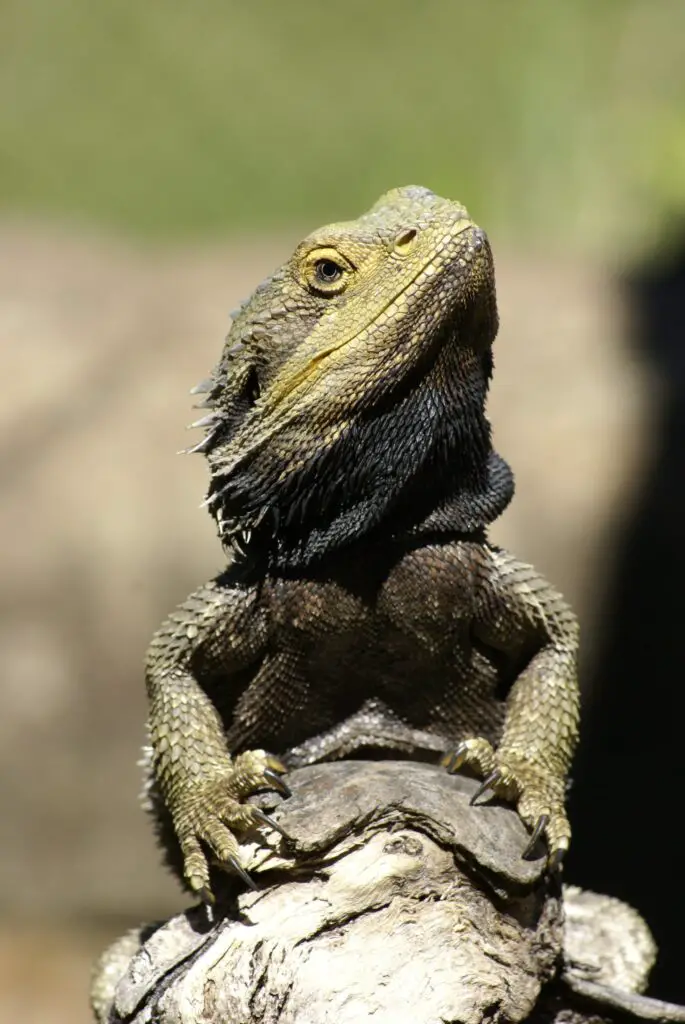How Many Superworms to Feed Bearded Dragon
How many superworms to feed bearded dragon: Bearded dragons, scientifically known as Pogona vitticeps, have gained popularity as fascinating reptilian pets due to their docile nature and striking appearance. These lizards hail from the arid regions of Australia and are renowned for their unique spiny throat pouches that expand during displays of aggression or courtship. As responsible pet owners, it is our duty to provide these captivating creatures with optimal care, starting with a well-rounded and nutritious diet.
Importance of proper nutrition for bearded dragons
Proper nutrition plays a pivotal role in the overall health and well-being of bearded dragons. Just like any other living creature, these reptiles depend on a balanced diet to thrive.
The right combination of nutrients ensures proper growth, development, immune system function, organ health, and reproduction. A deficient or imbalanced diet can lead to a slew of health issues for bearded dragons.
Nutritional deficiencies can result in metabolic bone disease (MBD), which weakens the bones and causes deformities due to inadequate calcium and vitamin D3 intake. Additionally, an improper diet can lead to stunted growth, compromised immune function, digestive problems such as impaction or diarrhea, and even early mortality.
Understanding the dietary needs of bearded dragons
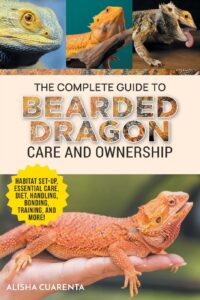 In order to meet the dietary needs of our scaly companions effectively, it is crucial to comprehend their natural feeding habits in the wild. Bearded dragons are omnivorous reptiles that consume a varied diet consisting predominantly of insects at a young age but gradually transitioning towards plant matter as they mature. Younger bearded dragons require higher protein intake for rapid growth but still benefit from incorporating plant-based foods into their diets regularly.
In order to meet the dietary needs of our scaly companions effectively, it is crucial to comprehend their natural feeding habits in the wild. Bearded dragons are omnivorous reptiles that consume a varied diet consisting predominantly of insects at a young age but gradually transitioning towards plant matter as they mature. Younger bearded dragons require higher protein intake for rapid growth but still benefit from incorporating plant-based foods into their diets regularly.
Adult beardies have more herbivorous tendencies; however, they also require a moderate intake of protein to maintain optimal health. A balance between animal-based proteins (insects) and plant-based matter is vital to meet their dietary requirements successfully.
Notably, one must consider the specific nutritional needs of bearded dragons when formulating their diet. Proper calcium-to-phosphorus ratio, vitamin supplementation, and hydration are factors that need careful attention to prevent deficiencies or imbalances that can adversely affect the health of these reptiles.
Overview of Bearded Dragon Diet
Natural diet in the wild
In order to understand the dietary requirements of bearded dragons in captivity, it is essential to delve into their natural diet in the wild. These omnivorous reptiles are native to the arid regions of Australia, where they roam a varied landscape consisting of deserts, grasslands, and woodlands. In their natural habitat, bearded dragons have access to a diverse range of food sources.
Their diet primarily consists of insects such as beetles, crickets, and grasshoppers, which provide them with essential protein and vital nutrients. Additionally, bearded dragons are opportunistic feeders and will consume small vertebrates like lizards and rodents when available.
They also incorporate plant material into their diet by feeding on a variety of vegetation including leaves, flowers, fruits, and even certain types of cacti. This diverse array of food sources ensures that they receive a balance of nutrients necessary for their survival.
Captive diet requirements
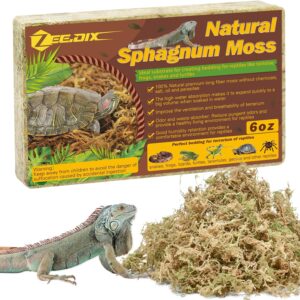 When kept as pets in captivity, replicating the natural diet becomes crucial for maintaining the health and wellbeing of bearded dragons. A balanced captive diet for these reptiles should consist primarily of high-quality feeder insects along with select vegetables and fruits. The protein content derived from insects is vital for growth and development while plant matter provides essential vitamins and minerals.
When kept as pets in captivity, replicating the natural diet becomes crucial for maintaining the health and wellbeing of bearded dragons. A balanced captive diet for these reptiles should consist primarily of high-quality feeder insects along with select vegetables and fruits. The protein content derived from insects is vital for growth and development while plant matter provides essential vitamins and minerals.
Feeder insects recommended for bearded dragons include crickets (both gut-loaded and dusted with calcium or vitamin supplements), Dubia roaches, mealworms (in moderation due to their chitinous exoskeleton), silkworms (rich in protein), black soldier fly larvae (high calcium content), and superworms (moderately fatty). It is important to note that a varied insect selection ensures nutritional diversity for your pet dragon.
Vegetables such as collard greens, mustard greens, turnip greens, and dandelion greens make excellent additions to a bearded dragon’s diet. These leafy greens are high in calcium and other essential vitamins.
Fruits should be offered occasionally as treats due to their higher sugar content. Suitable choices include papaya, blueberries, raspberries, and mangoes.
It is essential to avoid feeding bearded dragons toxic plants such as rhubarb or avocado as they can lead to severe health complications. By replicating the natural diet of bearded dragons in captivity through a combination of appropriate feeder insects and nutritious plant matter, we can ensure that our scaly companions receive the balanced nutrition they need to thrive in our care.
Superworms as a Nutritional Option
What are superworms?
Superworms, scientifically known as Zophobas morio, are the larvae of darkling beetles. They have become popular as a dietary option for reptiles due to their size and nutritional value. Superworms are larger than mealworms but smaller than some other feeder insects like Dubia roaches or crickets.
They measure around 1-2 inches in length and have a dark brown color, distinguishing them from the lighter colored mealworms. Their segmented bodies feature distinct black bands along their exoskeleton.
Description and appearance
How Many Superworms to Feed Bearded Dragon: Superworms possess well-developed mouthparts that allow them to chew through various materials, making them more substantial prey for bearded dragons compared to smaller insects. Their bodies are cylindrical and slightly flattened with six legs near their head segment.
Each segment is covered in tiny sensory hairs that aid in detecting changes in their surroundings. Unlike mealworm larvae, superworm larvae do not possess distinct legs on every body segment.
Life cycle and development stages
The life cycle of superworms consists of several stages: egg, larva (superworm), pupa (resting stage), and adult beetle. Adult darkling beetles mate to lay eggs that hatch into tiny superworm larvae within one to two weeks.
These larvae grow rapidly over time, shedding their exoskeleton several times during successive instars or growth stages before reaching pupation. The pupa stage occurs when they transform into motionless cocoons where they undergo metamorphosis into adult beetles over a period of approximately three weeks.
Nutritional value of superworms for bearded dragons: How Many Superworms to Feed Bearded Dragon
Superworms offer significant nutritional benefits for the diet of bearded dragons due to their composition. They are a good source of protein, essential fatty acids, and other vital nutrients. Protein is crucial for reptiles like bearded dragons to support growth, muscle development, and overall health.
Superworms provide substantial protein content, ranging from 19-23% of their dry weight, making them an excellent option for protein supplementation in the diet of bearded dragons. Their fat content is relatively higher compared to some other feeder insects but primarily consists of beneficial essential fatty acids such as omega-3 and omega-6 fatty acids.
These fats play a vital role in maintaining healthy skin, promoting immune function, and aiding in reproductive processes. Furthermore, superworms have a favorable calcium to phosphorus ratio of approximately 1:15, which is important for ensuring proper bone development and preventing metabolic bone diseases like MBD (metabolic bone disease) in bearded dragons.
Superworms are a highly nutritious option as a dietary component for bearded dragons due to their impressive nutritional composition. Their description and appearance distinguish them from other feeder insects available on the market.
Understanding the life cycle stages enables us to appreciate their growth process better. The high protein content with essential amino acids, beneficial fats including essential fatty acids, and appropriate calcium-phosphorus ratio make superworms an excellent choice for enhancing the nutritional value of a bearded dragon’s diet.
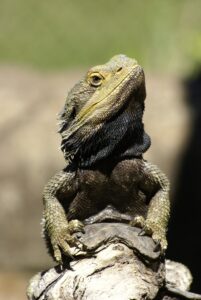
Hatchlings/Juveniles
When it comes to determining the appropriate amount of superworms to feed hatchling and juvenile bearded dragons, it is crucial to consider their small size and specific nutritional requirements. These young dragons are in a critical stage of growth and development, so providing them with adequate nutrition is vital for their overall health and well-being.
Recommended feeding frequency: Hatchlings and juveniles have higher metabolic rates compared to adult bearded dragons, which means they require more frequent feedings. It is generally recommended to offer food daily to meet their growing needs.
Consistency in feeding schedules helps establish healthy eating habits, ensuring proper growth.
Approximate number of superworms per feeding: The number of superworms per feeding for hatchling and juvenile bearded dragons should be carefully regulated.
Typically, you can provide around 5-10 appropriately sized worms per meal. These worms can be chopped into smaller pieces if necessary, making them easier for the young dragons to consume.
Adult Bearded Dragons: How Many Superworms to Feed Bearded Dragon
As your bearded dragon matures into adulthood, its nutritional requirements change. Adult dragons have slower metabolisms compared to hatchlings/juveniles, and their diet must be adjusted accordingly. Properly understanding the appropriate amount of superworms to feed adult bearded dragons is essential for maintaining their health and preventing weight-related issues.
Recommended feeding frequency: Unlike younger beardies, adult dragons don’t need daily feedings due to their slower metabolic rate. It’s generally advised to offer food every 2-3 days.
This intermittent fasting simulates natural hunting patterns experienced by wild bearded dragons.
Approximate number of superworms per feeding: The quantity of superworms that should be fed to adult bearded dragons varies based on their size and overall health.
On average, you can provide around 4-6 appropriately sized worms per feeding. Monitoring your dragon’s weight and body condition is crucial in adjusting the number of superworms to ensure they maintain a healthy weight without becoming overweight.
Tips for Feeding Superworms to Bearded Dragons
Gut-loading: Enhancing Nutritional Value through Proper Feeding
Gut-loading is an essential practice when it comes to feeding superworms to your bearded dragon. It involves feeding the worms with nutritious foods before offering them as a meal for your pet.
This process ensures that the superworms are packed with vital nutrients, which in turn enhances the nutritional value of their consumption by your dragon. When gut-loading superworms, you should provide them with a balanced diet that includes various vegetables and fruits rich in vitamins and minerals.
Examples include leafy greens like kale, collard greens, and mustard greens, as well as carrots, squash, and sweet potatoes. By diversifying their diet, you can ensure that the superworms become a powerhouse of nutrition for your bearded dragon.
Dusting: Supplementing with Calcium and Vitamins
In addition to gut-loading, another important step in preparing superworms for your bearded dragon is dusting them with calcium or vitamin supplements. This process helps correct any potential nutritional deficiencies in their regular diet and ensures that your pet receives all the essential nutrients it needs. To dust the superworms properly, lightly coat them with a calcium supplement powder designed specifically for reptiles.
You can use commercial reptile-specific supplements available at pet stores or consult a veterinarian for recommendations. Alternatively, you can also use vitamin powders formulated specifically for reptiles.
Feeding Techniques: Hand-Feeding vs Bowl-Feeding
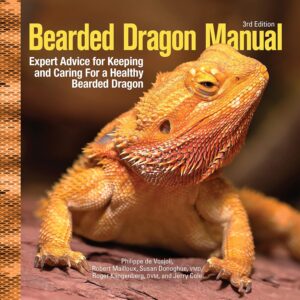 When feeding superworms to your bearded dragon, there are two primary methods – hand-feeding and bowl-feeding. Hand-feeding involves directly offering the superworms to your dragon using tweezers or your fingers.
When feeding superworms to your bearded dragon, there are two primary methods – hand-feeding and bowl-feeding. Hand-feeding involves directly offering the superworms to your dragon using tweezers or your fingers.
This method allows for closer interaction and can be a great bonding experience with your pet. On the other hand, if you prefer a more hands-off approach, you can opt for bowl-feeding.
This method involves placing the superworms in a shallow dish or bowl inside your dragon’s enclosure. The bearded dragon can then choose to eat them at its own convenience.
Observing Appetite and Adjusting Quantities
Regardless of the feeding technique chosen, it is important to observe your bearded dragon’s appetite and adjust the quantities accordingly. Each dragon has unique dietary requirements and preferences, so it is crucial to monitor their eating habits to provide an appropriate amount of food.
If your dragon readily consumes all the superworms offered without hesitation, you may gradually increase the number of worms per feeding. Conversely, if there are consistently uneaten worms left in their enclosure after feeding, it may indicate that you’ve been overestimating their appetite or that they are not interested in that particular type of food.
Potential Risks and Concerns with Superworm Feeding
Impact on calcium-phosphorus balance in the diet
When it comes to feeding superworms to bearded dragons, one potential concern is the impact they have on the calcium-phosphorus balance in their diet. While superworms are a good source of protein and fat, they also contain high levels of phosphorus.
This can be problematic because bearded dragons require a calcium-rich diet to maintain healthy bones and prevent metabolic bone disease. To mitigate this risk, it is important to ensure that the overall diet provided to your bearded dragon is properly balanced.
Superworms should never be the sole food source but rather a part of a varied diet that includes other insects and fresh vegetables. Additionally, dusting the superworms with calcium powder before feeding can help increase their calcium content.
Possible digestive issues
Another potential concern with feeding superworms to bearded dragons is the possibility of digestive issues. Superworms have a tough exoskeleton which can make them harder for bearded dragons to digest, especially if they are fed in large quantities or too frequently. To minimize this risk, it’s important to consider the size of the worms being fed.
For hatchlings and juveniles, it is advisable to offer smaller-sized worms or consider cutting larger ones into appropriate portions. Additionally, observing your dragon’s digestion after each feeding can help you gauge whether adjustments need to be made in terms of portion sizes or frequency.
To Sum Up How Many Superworms to Feed Bearded Dragon
While superworms offer nutritional benefits as part of a balanced diet for bearded dragons, there are certain risks and concerns that need to be considered. The high phosphorus content in superworms can disrupt the crucial calcium-phosphorus balance needed for optimal health. However, when fed in moderation and in combination with other appropriate food sources, these risks can be mitigated.
By following proper feeding techniques and monitoring your bearded dragon’s digestion and overall health, you can ensure that superworms are a valuable addition to their diet. Remember, a well-rounded and varied diet is key to keeping your scaled friend happy and healthy!
Further Reading:
- Carolina Custom Cages Terrarium Review
- 8 Best Basking Rocks for Beardie: What Is the Best Choice?
- 10 Best Thermometers for Beardie: How to Choose the Best One?
- 5 Best Beardie Lighting Setups for Beardie Lovers
- 9 Best Heat Lamps for Beardie: Natural Habitat Provided

